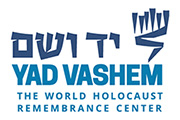You have no items in your shopping cart.
- Books in Hebrew
- Yad Vashem Publications
- Other Languages
- Educational Materials
- Gifts & Memorabilia
Categories
- Books in Hebrew
- Yad Vashem Publications
- Other Languages
- Educational Materials
- Gifts & Memorabilia
- Home /
- Yad Vashem Publications /
- Yad Vashem Studies e-articles /
- 2001-2005 /
- Network of Terror: The-Nazi Concentration Camps in Yad Vashem Studies, Volume XXIX
Information
Copyright © 2025 Yad Vashem Store. All rights reserved.
Powered by nopCommerce
